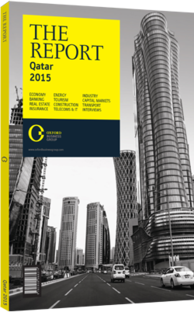Omar Hussain Alfardan, President and CEO, Alfardan Group: Interview

Interview: Omar Hussain Alfardan
Which segments of the real estate market are currently the best-performing?
OMAR HUSSAIN ALFARDAN: While all industries are performing well, the real estate sector – one of Qatar’s most important non-hydrocarbons sectors – is considered to be the most vibrant. Given the country’s steady population increase, the residential segment continues to climb, driven by rising demand. This segment offers significant investment opportunities, as private developers are increasingly partnering with the state to help bridge the gap between supply and demand. The completion of residential towers in The Pearl and the Diplomatic District in the next 12 months aims to address housing and property shortages. One of our biggest companies, Alfardan Properties, is extending its support to the government by undertaking several projects of its own that aim to help meet new demand.
The hospitality market, meanwhile, will be driven by an expected 20 % growth in tourist arrivals. The demand for four- and five-star hotels is steadily on the rise, making way for additional operators to venture into Qatar and introduce new hotels and tourist destinations. Demand for commercial buildings is likewise projected to rise, and we expect a significant increase in demand for luxury mixed-used developments. Lately, these have become a preferred choice for investment, as they offer a broader market by leasing to both individuals and companies. There is also a high degree of enthusiasm in the retail sector, with several malls and retail facilities now under construction.
What initiatives are private and public developers currently pursuing to provide the infrastructure required for the 2022 FIFA World Cup?
ALFARDAN: To develop world-class transport infrastructure for the World Cup, the government has allocated more than $140bn to be spent over the next five years. The construction of a new airport, a metro system and a network of roads will support the thousands of visitors who will be coming to Qatar to watch the event. Within the next five years alone, the Qatar Tourism Authority is projected to invest $17bn in various tourism-related infrastructure projects.
Because of this growth, the government is collaborating with private developers so as to successfully complete its planned developments in time for the World Cup. Local private developers are now actively taking part in Qatar’s tourism infrastructure, and the tourism authority is giving direct support to private destination and hospitality owners to ensure that they all speak the same language and follow the same objectives. The existing hotels in Qatar do not pose a threat for an oversupply of hotel rooms at the moment. The market is still flexible enough to absorb new hotels and extra room keys, especially with Qatar scheduled to host international events.
What effect will Qatar’s recent winning bid to host the 2019 World Athletics Championships have on real estate development?
ALFARDAN: As with the 2022 FIFA World Cup, the 2019 World Athletics Championships will put the spotlight on Qatar’s development initiatives, especially those in the business sector. The property market will benefit from this event, as more people coming to the country to watch the championships will boost demand for residential units and room keys. Amid growth in population and the number of companies entering the market to participate and bid for mega-projects, the demand for commercial projects is also expected to rise. Qatar is becoming one of the most attractive economies in the world, making way for a strong and positive transformation in the real estate market.
The development pace is being fast-tracked as numerous projects are get under way, with the government actively constructing stadiums, housing complexes and mega-developments such as the upcoming Lusail City.
Total infrastructure spending is expected to reach $24bn in 2015, while megaprojects amounting to more than $150bn are in the pipeline for announcement by 2016.
You have reached the limit of premium articles you can view for free.
Choose from the options below to purchase print or digital editions of our Reports. You can also purchase a website subscription giving you unlimited access to all of our Reports online for 12 months.
If you have already purchased this Report or have a website subscription, please login to continue.

